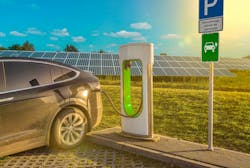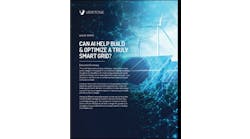The electrification of U.S. automobile culture has hit quite a few speed bumps lately — some from market events and some inadvertently put up by the very movement trying to promote electric vehicles (EVs).
A surprising story in Politico recently revealed that almost $100 million of the $265 million awarded through the Infrastructure Investment and Jobs Act has been awarded to conventional truck stop and gas station chains (using EVAdoption data). Now, of course, this is the same real estate that the EV industry wants to utilize for charging stations, but it’s an eye opener on the Highway to Net Zero, nonetheless.
The American Petroleum Institute has pointed out that there are more than 145,000 fossil fuel filling stations nationwide with more than 1 million gas and/or diesel pumps. Conversely, the U.S. has less than 35,000 electric charging stations in place.
The challenges to transportation electrification are manifold, so to speak. In addition to taking a long time to charge your EV, finding a station to do it is equally difficult, if not worse.
It’s not going to be zero to 60 in six seconds flat, yet the solutions in the forward view mirror are closer than they appear, even if not simple or fast. Electric power is not like fuel, which can lay in a storage tank; electrons must keep moving, and distribution lines and the grid must maintain a certain frequency or risk outage issues. Microgrids and aggregated distributed energy resources (DERs) can drive the transition.
Battery storage on site can solve some of those energy delivery issues, but the systems themselves need charging and thus must be grid connected or supported by microgrids in the vicinity. The potential load necessitated by millions of new EVs on the road is daunting for grid planners, with all sorts of uncertainties around everything from generation assets to substations and transformers.
Microgrids are a true solution, but they need to align with the crucial Ps and Qs required to make distributed energy happen in the service of e-mobility. Those include planning and performance, quality and quotient. Are they right-sized? Do they do the job well and do they make financial sense?
Making the Case of Microgrids for EV Charging
Microgrids for Mission Critical
Happening at Microgrid Knowledge 2024: Join us April 22-24 in Baltimore
All of these challenges and questions are confronting both the EV and microgrids industries. We have some answers, and they will be fully presented less than two weeks from now at the Microgrid Knowledge Conference, happening April 22-24 at the Marriott Waterfront along Baltimore’s Inner Harbor.
Among the sessions happening at Microgrid 2024 is “How to Optimize Microgrids for Commercial EV Charging Success,” which is 2 p.m.-3 p.m. EST on Monday, April 22 in Harbor Ballroom A of the Marriott Waterfront.
Check out Microgrid 2024's Full Conference Slate
One day later, the EV-Microgrid dynamic will be intertwined again in “Many Paths to Resiliency: EV Public Charging and VPPs via Microgrids,” happening 10:30 a.m.-11:30 a.m. Tuesday, April 23 in Harbor BCD.
At 1 p.m. Tuesday, April 23, the legal and policy nuances and deliverables of the Inflation Reduction Act will be the focus of “Incentivizing an Energy Revolution: What the Inflation Reduction Act has Accomplished, Microgrid IRA Case Studies and Future Outlook,” in Harbor B. Several of the Microgrid 2024 sessions will weigh in on the issues facing utilities, which are also trying to prepare and promote electrification across sectors.
Industry and utility leaders participating in these panels include Xendee, Pacific Gas & Electric, AlphaStruxure, Prologis Mobility, PXiSE Energy Solutions, Rove Charging, CPower Energy, Ameren Services, Generate Capital, Smart Electric Power Alliance, Arup and regulatory and legal experts.
Registration is still open for Microgrid 2024. The event features three days of content with more than 20 sessions and more than 50 microgrid and aggregated DER leaders.
Sponsors of Microgrid 2024 include PowerSecure, Spirae, Cummins, Power Engineers, Schweitzer Engineering Laboratories, Ameresco, Honeywell, Concord Engineering, Schneider Electric, UL Solutions, PXiSE Energy Solutions, Engine Technology Forum, Xendee and Powerside.








